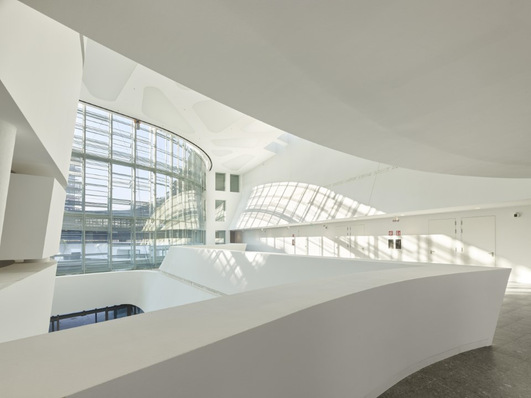Real estate causes almost 40 per cent of global CO2 emissions, not to mention the high consumption of energy and raw materials for its construction, use and management. Sustainable buildings are therefore very popular - both with users and investors. But how are green buildings defined? What criteria come into play here?
"It is becoming increasingly important to make buildings and flats as energy-efficient as possible," says Christian Walter, expert on environmental social governance (ESG) and CEO at SedaiNow. "However, energy consumption is not the only sustainability criterion for real estate. As part of the transformation process towards Sustainable Real Estate, ESG criteria are playing an increasingly important role."
More than just energy-efficient
In the building sector, greenhouse gas emissions need to be reduced by more than two-thirds by 2030 compared to 1990 levels. Buildings used by the federal government are supposed to serve as a kind of role model in terms of energy efficiency, climate protection and sustainable construction, so stricter and more binding requirements already apply here.
Among consumers, meanwhile, the demand for alternative heating systems as well as solar panels is growing in order to protect both one's wallet and the climate.
See also: How the glass industry can benefit from the market for BIPV
"Even though it is an important factor, energy efficiency alone does not determine the sustainability of a building," explains Christian Walter. "For a holistic assessment, ESG criteria serve as a guideline. This means that environmental aspects such as energy refurbishment or the choice of building materials are joined by social and societal points in the real estate audit."
For example, what about the quality of life and work? Is the building suitable for the elderly and children as well as people with accessibility issues? Are there childcare facilities nearby? Depending on the condition and use of buildings, various criteria can be decisive.
Transparent structures
Sustainability certificates of different classification systems such as DGNB, LEED and BREEAM or also the new quality seal Sustainable Building (QNG), in addition to the energy performance certificate, make statements about how environmentally friendly buildings are constructed, used, managed or dismantled.
Each audit programme focusses on different aspects. "Many countries have their own standards for energy-efficient buildings," explains SedaiNow's ESG expert. "The fact that many seals exist side-by-side ultimately does not give real estate stakeholders the transparency they need. On the other hand, the existing programmes - as of today - do not paint a holistic picture of all relevant factors."
By focussing on all ESG criteria, software providers enable a holistic 360° analysis: taking into account environmental, social and economic factors, an authentic and reliable classification of a building is made and optimisation approaches are derived. At the same time, the implementation of a uniform system creates a new level of comparability.
Value enhancement
It is no longer just the market and location that are decisive for the value of a property, it is above all a building’s sustainability that determines its attractiveness - both for users and owners of the building and especially for investors and fund managers.
Also interesting: Adaptive facades: Insights into the building envelope of the future
"Green buildings not only promise an increase in living and user comfort, but also generally result in lower operating costs and higher returns on the market. At the same time, real estate players can benefit from subsidies," says Christian Walter. "Those who already exceed the current requirements today create the advantage of not having to make expensive retrofits in the years to come."
With the EU taxonomy for sustainable investments and the Sustainable Finance Disclosure Regulation (SFDR), the first legal regulations have already come into force. In the future, further legal tightening is on the horizon, which will require a strategic (re)orientation of real estate players.













